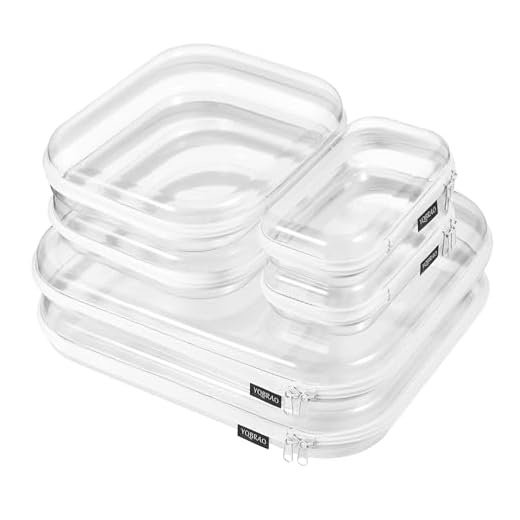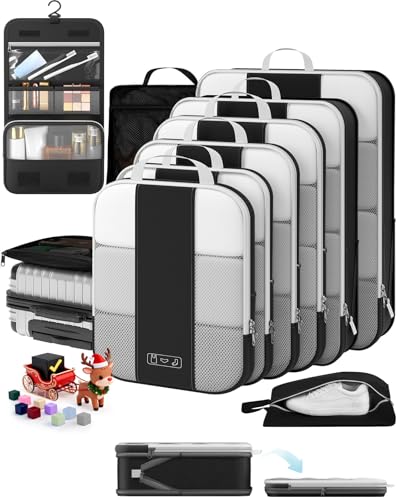Direct instruction: Store the adult toy in carry-on rather than checked baggage when possible; remove internal batteries, place spare lithium cells in the cabin only and protect battery terminals with tape or original packaging. Expect routine security screening–keep the item in a clear, accessible pouch to speed inspection and avoid delays.
Security and liquid rules: U.S. Transportation Security Administration and most Western aviation security authorities permit intimate devices in both carry-on and checked baggage, but lubricants and gels must follow the 3.4 oz / 100 mL carry-on limit (larger containers belong in checked baggage). Installed lithium-ion batteries are generally allowed; spare lithium-ion or lithium metal batteries must be transported in the cabin and their terminals insulated. Prevent accidental activation by using a locking cover or removing detachable power sources.
International restrictions and customs: Several jurisdictions prohibit importation or possession of adult paraphernalia and may confiscate items or impose fines–examples include the United Arab Emirates, Saudi Arabia and Malaysia. Prior to travel, consult the destination’s customs website and the airline’s official policy; when connecting through third countries, confirm rules for transit points as well.
Practical packing tips: Clean the device with mild soap and water, dry thoroughly, then seal in a zip bag or dedicated cloth pouch and wrap with clothing for discretion. Retain purchase receipts or original packaging when possible. If an inspection is requested at security, politely ask for a same-gender officer if comfort/privacy is a concern and comply with lawful screening procedures. For long trips or high-risk destinations, consider shipping the item separately via a carrier that provides customs documentation.
Carry-on vs checked baggage: airline rules and risk of confiscation
Prefer carry-on for items with lithium batteries or removable powerbanks; store non-battery adult items in checked baggage only when destination laws permit and loss risk is acceptable.
Regulatory specifics
TSA: adult products are permitted in both hand and checked bags but remain subject to inspection. Liquids, gels and creams follow the 3.4 oz / 100 ml carry-on limit; larger containers must go in checked bags. Spare lithium batteries and powerbanks must travel in the cabin; installed batteries should be protected from short-circuit and accidental activation. IATA/ICAO rules: portable batteries between 100 Wh and 160 Wh require airline approval; over 160 Wh generally prohibited. Many national aviation authorities mirror these limits.
Customs and criminal law: some jurisdictions prohibit import, sale or possession of explicit adult items; enforcement can include seizure, fines and criminal charges. Examples with frequent enforcement actions include the UAE and Saudi Arabia; discretion and prior legal checks for the destination country are mandatory.
Practical risk-reduction
Before departure, check the departing and arrival airline policies and local customs guidance (airport websites or official government pages). Remove spare batteries and place them in cabin baggage; pack installed batteries so the device cannot accidentally power on. Keep receipts or packaging to demonstrate purchase and medical uses where applicable. Declare items at customs when laws require disclosure rather than attempting concealment; seizure or prosecution risk rises with hidden goods.
If legal uncertainty or high value is a concern, consider shipping items via courier with proper customs documentation or buying low-cost replacements at destination. For unrelated maintenance advice on travel equipment, see methods for removing water from air compressor lines.
Airport security screening: will an adult toy trigger extra inspection or delay?
Place intimate devices inside an opaque pouch and stow power cells separately; this reduces the chance of secondary inspection and shortens processing time at the checkpoint.
Common screening triggers
X‑ray scanners flag organic‑shaped dense items, integrated metal cores, and lithium power packs for manual inspection. Silicone and rubber register as soft‑tissue density and can appear ambiguous on the monitor; hollow or irregular outlines are often selected for hands‑on exam. Visible residue, strong odors, or protruding charging ports increase the probability of removal from the bag and closer examination.
How to minimize delays and handle inspections
Group items in one easy‑access pouch near the top of a bag so officers can inspect without unpacking. Tape battery terminals and place loose cells in a small zip bag; follow the airline’s policy regarding carriage of spare lithium batteries. Keep items clean; heavily soiled pieces are more likely to be discarded or require sanitizing. If an officer requests a manual check, request a private screening area–policy typically allows one on request. Marking the pouch “personal care” can help officers identify noncontraband quickly.
Practical tip: Minimal packaging, separated power sources, and visible cleanliness are the fastest ways to avoid extended checks. For unrelated gear ideas see best products triple umbrella canopy cover.
Packing for hygiene and discretion: cleaning, storage cases and odor control
Recommendation: Clean non-porous adult toys immediately after use with warm water and unscented mild soap, dry completely, remove batteries or lock controls, then pack in a sealed silicone or hard-shell travel case with silica gel and an activated charcoal sachet to prevent moisture and odors.
- Cleaning protocols by material
- Silicone, glass, stainless steel: wash 60–120 seconds with soap + warm water; for non-electronic pieces, boil 3 minutes or wipe with 70% isopropyl alcohol and air-dry.
- TPE, jelly, rubber, porous materials: wash with soap + water, pat dry; avoid boiling and alcohol which degrade texture; use single-use barriers (condom) for travel reuse.
- Electronics (motorized/USB): unplug, wipe external surfaces and seams with 70% isopropyl on a lint-free cloth; never submerge; allow 24 hours to dry before packing.
- Battery-operated items: remove batteries; tape terminals with electrical tape to prevent shorts during transit.
- Storage case recommendations
- Hard-shell case with foam inserts: protects shape and motor components; pick a model with separate compartments for multiple items.
- Sealable silicone travel cases: water-resistant, easy to clean; pair with a small zip-top bag for double containment.
- Fabric pouches: use only as inner layer inside an opaque outer case to avoid visibility and reduce scent transfer.
- Sizes: choose a case at least 1–2 cm larger than the item’s widest point to avoid pressure; for irregular shapes, use foam or cloth wrap.
- Odor control methods
- Activated charcoal sachets (4–10 g) absorb volatile compounds without adding fragrance; replace every 30–60 days for repeated travel.
- Silica gel (5–10 g) to remove residual moisture that promotes microbial growth; place directly inside case but not touching delicate finishes for long durations.
- Baking soda in a small breathable pouch neutralizes odors but can leave powder residue if pouch fails; use only sealed containers.
- Avoid scented dryer sheets or perfumed sachets inside storage–these mask odors and can interact chemically with materials.
- Discretion tips
- Use opaque, hard-shell cases; place inside a clothing-lined compartment or opaque toiletry bag to avoid outlines and labeling.
- Wrap items in clean socks or underwear as an extra buffer and visual camouflage inside a suitcase or carry pouch.
- Do not use branded or explicit packaging; transfer items into neutral containers before packing.
- Packing checklist (compact)
- Cleaned, dry item; batteries removed and terminals taped.
- Sealed silicone or hard-shell case + inner zip-top bag.
- Silica gel packet + activated charcoal sachet.
- Small lint-free cloth and a travel-size bottle of 70% isopropyl alcohol (if permitted by other rules).
- Protective outer pouch or clothing wrap for discretion.
For unrelated travel gear suggestions, see best umbrella stroller for older kids.
Battery-powered toys: removable batteries, lithium rules and safe transport
Remove all removable cells from intimate devices and pack spare batteries in cabin baggage with terminals insulated; do not place spare lithium batteries in checked bags.
Lithium‑ion (rechargeable): batteries up to 100 Wh are permitted in the cabin without airline approval; batteries >100 Wh and ≤160 Wh require airline approval and are typically limited to two spares per passenger; batteries >160 Wh are prohibited. Calculate watt‑hours as Wh = V × Ah (example: 3.7 V × 1.5 Ah = 5.55 Wh). Many consumer vibrators and massagers use 3.7 V cells under 10 Wh.
Lithium metal (non‑rechargeable, e.g., some button cells): limits are expressed as lithium content–most passenger rules restrict cells to a maximum of 2 g lithium content per cell and batteries to 5 g lithium content; keep original packaging where possible and verify manufacturer specs for compliance.
Packing and short‑circuit prevention: leave batteries in device only if installed and device cannot be accidentally activated; otherwise remove them. Insulate battery terminals with tape or fit each spare in a dedicated plastic pouch or original box. Use a rigid carry case for devices to prevent crushing and accidental activation.
Powerbanks and external battery packs follow the same Wh rules as lithium‑ion spares: store in cabin, label Wh on the device where present, and if Wh is not printed, calculate and be prepared to show the math to airline staff. Many carriers limit the number of high‑capacity powerbanks per passenger.
At screening: staff may request to power on devices with internal batteries to prove functionality; have devices charged enough for that test. If a device has non‑removable internal lithium cells, prefer cabin carriage and check airline policy before travel; some carriers prohibit certain types despite general allowances.
Noncompliance risks include confiscation of batteries or devices, denied boarding, flight delays, and fines by aviation authorities. Always check the departing carrier’s battery policy and the regulations of the destination country before travel.
International travel and customs: banned items, declaration and cultural regulations
Declare adult merchandise on customs forms when destination regulations require it; failure to declare may result in seizure, fines or criminal charges.
Countries with documented prohibitions or strict enforcement include: United Arab Emirates, Saudi Arabia, Malaysia, Indonesia, Brunei, Qatar and parts of the Gulf and Southeast Asia. Enforcement ranges from routine seizure at entry to fines, detention and deportation; check embassy or national customs websites before departure.
Customs treatment depends on classification: personal effects versus commercial import. Personal-use items carried by a traveler are often treated differently from parcels or shipments with invoices. Commercial imports require tariff classification, accurate invoices, payment of duties and sometimes import licenses; postal parcels are screened and more frequently intercepted.
De minimis thresholds vary by jurisdiction (example: United States commonly applies an $800 threshold for duty exemption on low-value imports); verify the specific monetary and quantity limits with the destination’s customs authority to determine whether declaration or tax/payment is required.
Packaged, new or boxed items attract more attention than used, unbranded items. For personal-use items, removing overt retail packaging reduces inspection likelihood; for shipped goods, label contents accurately to avoid misclassification but be aware that explicit declarations may trigger prohibition checks.
When importing for resale or gifting, register as a commercial importer and use an appropriate HS tariff code; failure to do so increases risk of seizure and penalties. Use certified couriers with customs brokerage services for commercial consignments to reduce delays and improper handling.
Respect local cultural and public-decency laws: display, distribution or public advertisement of adult-related products can be illegal independent of import rules. Hotels and temporary accommodations in conservative countries may refuse delivery or storage; confirm property policies before arranging shipments.
If an item is detained, request a written seizure notice and the legal basis for action. For detentions involving potential criminal charges, contact consular services. Administrative remedies (appeal, release upon payment, return shipment) vary widely; customs documentation and purchase receipts improve chances of favorable resolution.
Practical checklist before international movement: review destination customs and criminal statutes; consult embassy guidance; avoid sending parcels to jurisdictions known for strict enforcement; keep purchase receipts and proof of personal use; use discreet packaging for permissible items; use licensed customs brokers for commercial imports.








